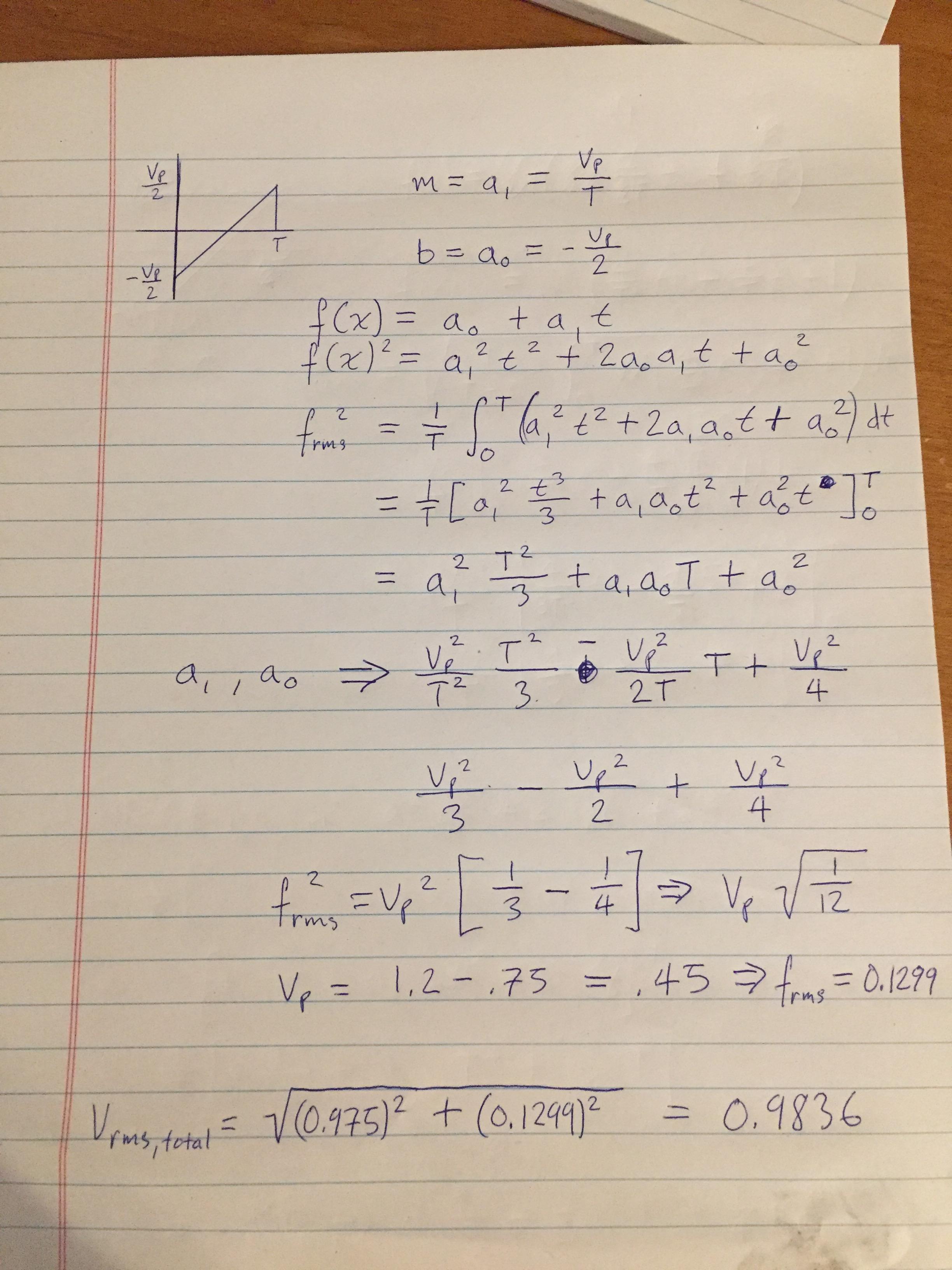rg1
Well-known member
I have calculated RMS values of a saw tooth waveform in two ways.
1. One is taking take square of whole wave, integrate and take mean and then root of it.
2. Two split the wave into two parts; one DC and the AC parts. Take RMS of both separately. Then sqrt the squares of both.
Theoretically I find both ways are correct. Then why answers not matching. Can some one help me where am I wrong.
View attachment 9715
1. One is taking take square of whole wave, integrate and take mean and then root of it.
2. Two split the wave into two parts; one DC and the AC parts. Take RMS of both separately. Then sqrt the squares of both.
Theoretically I find both ways are correct. Then why answers not matching. Can some one help me where am I wrong.
View attachment 9715






















